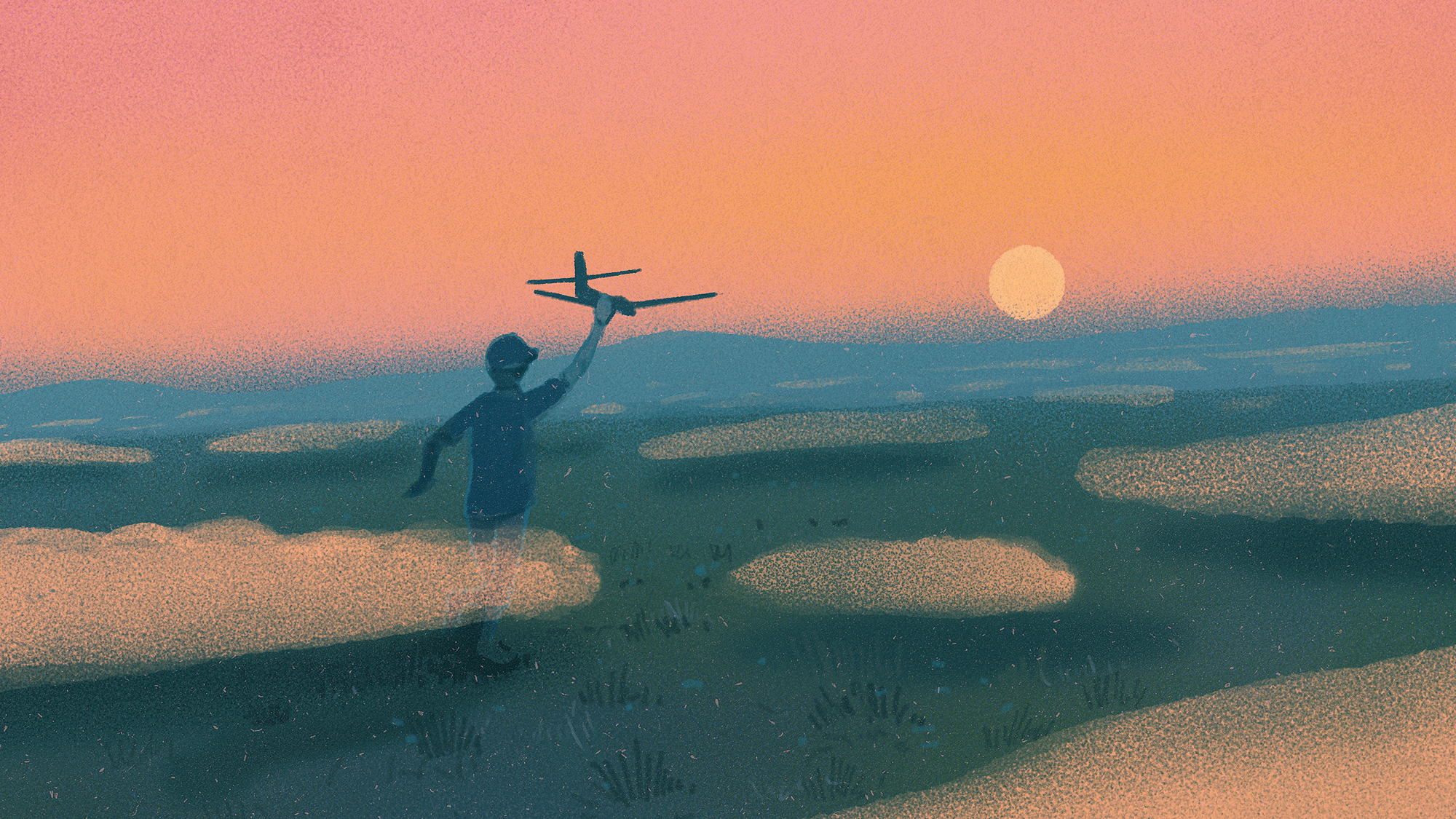In pursuit of a dream
Overcoming something larger than a first solo
By: Zane Zachary
From the beginning, my passion for flight was continuously sponsored and encouraged.

I reflect on my 4-year-old self, grinning up at my parents as they bought me my 500th toy airplane and my overwhelming excitement at the mere mention of flying. At 4, the aviation fixation was adorable; I would have been ideal on the cover of a catalog, dashing across a field, keeping a toy airplane aloft while wearing a leather jacket and aviators. Further, I recall my third-grade Christmas holiday report when I visited Australia’s extraordinary Great Barrier Reef. I was so enamored with aviation that I wrote the entire essay on the flight, as it was my first time on the prominent Boeing 747 jumbo.
When others saw the obsession in my eyes, they often offered to take me flying. However, my parents rebuffed these offers; aviation was flawless as long as I remained on the ground. And yet, if I was near an airport, you could always find me with my fingers intertwined through the enormous fence, gazing in, trying to obtain a clear view of the airplanes. For me, the fences at airports always stood as a metaphor for the divide between pilots and a young boy with a dream.
I eventually saw why my biggest supporters were against me. Ingrained in my Colorado parents’ memory was when a Gulfstream carrying 18 people attempted to land while Aspen was enveloped by heavy, dark clouds and a steady snowfall persisted throughout the night. The passengers’ last moments in the air were incomprehensible. The descent into Aspen is gut-wrenching. Located in a plunging valley, it’s an approach unlike any other. The flight path follows the incline of the peaks, and the descent resembles a dive bomb where the entire cockpit window is enveloped by ground. Your knuckles turn white from clenching the seat as you feel nauseating, tumbling-forward sensations. On this particular night, most flights into Aspen diverted. Yet, I was told, the captain thought it necessary to land in Aspen because the client spent a large amount of money on a dinner party. As they dropped deeper into the heart of the Rockies, the heavy snowstorm rushing past the windows illuminated by the landing lights must have been disconcerting. Although they claimed the runway was in sight, the pilots continued past minimums blind. As they emerged from the clouds for the last time, they saw a mountain instead of a runway. My dad, a firefighter, responded to the crash. As one can imagine, it’s not a pretty picture when your child wants to start taking flying lessons.
Thus, my parents believed every flight I took I could “end up as a black spot on the side of a mountain.” Regardless, I was determined to persevere, and my parents eventually capitulated.
I can still see the crystal-clear blue sky with wispy white cirrus clouds on the day of my first flight. I wanted to proceed slowly—every minute detail carried weight. My hands were jittering with vigor as I gradually added power; the vibrations battered through the aircraft, and the whining friction of the tires started to accelerate. The white stripes on the runway passed underneath the airplane at a faster and faster rate. I pulled slightly back on the stick, and the airplane jumped off the runway, the G-forces forcing me into the back of the seat, filling the windshield with brilliant, crisp blue sky. I felt every infinitesimal detail. The 3-D nature of flying felt familiar from simulators; however, it was an out-of-body experience to partake in the full nature of flight.
With the flight forever enshrined in glory, I recall what was supposed to be a routine lesson on a calm, obscured day in May. My instructor told me to pull the airplane over. He was a man of few words and said, “Do three touch-and-goes.” He gave me a fist bump, opened the door, and left the airplane. I had never experienced unwavering trembling and erratic breathing. I was tenacious in every flow and check, talking myself through each step. When I was aloft, alone, it was so serene. All my worries were left on the ground. I reflected, looking out at the lush, desolate Colorado landscape, thinking, “I did it.” On my arrival home, my parents said, “Glad it’s over.” It left me feeling as if I had accomplished nothing.
However, as I’ve reflected, the solo is not the seminal moment of aviation that it is chalked up to be. It’s unreasonable to expect the pomp and circumstance akin to a presidential inauguration for completing the first step. Instead, it’s just the beginning. I’m fortunate to have recognized such a vital lesson at an early age: The first venture of triumph in aviation lays the foundation to govern your tension when you must persevere in a new endeavor. I recall my first time flying in formation, my checkrides, and my first time in IMC—all times I depended on my past experiences to persevere. Today, walking onto the ramp for a solo flight with the airplane keys clenched in my hand on a clear bluebird day never enthralls me with vigor and anticipation as it used to, although I still see and hear the 8-year-old who wrote his Christmas vacation report on a 747 flight. He tells me with awe and astonishment, “You get to fly?”
Zane Zachary is a pilot living in Aspen, Colorado.


